Collective Molecular Activities of the Plant: Amaranthus Spinosus

Plant ID: NPO6060
Plant Latin Name: Amaranthus Spinosus
Taxonomy Genus: Amaranthus
Taxonomy Family: Amaranthaceae
Plant External Links:
NCBI TaxonomyDB:
124765
Plant-of-the-World-Online:
n.a.
Country/Region:
Kenya; Indonesia; India; Thailand; LaosTraditional Medicine System:
Sowa-Rigpa; Indian Folk; Ayurveda; SiddhaMedicinal Functions:
Antidote; Astringent; Diaphoretic; Emmenagogue; Emollient; Febrifuge; VD
Kenya; Indonesia; India; Thailand; Laos
Overview of Ingredients
16 All known Ingredients in Total
Unique ingredients have been isolated from this plant.Plant-Ingredients Associations were manually curated from publications or collected from other databases.
14 Ingredients with Acceptable Bioavailablity
Unique ingredients exhibit acceptable human oral bioavailablity, according to the criteria of SwissADME [PMID: 28256516] and HobPre [PMID: 34991690]. The criteria details:SwissADME: six descriptors are used by SwissADME to evaluate the oral bioavailability of a natural product:
☑ LIPO(Lipophility): -0.7 < XLOGP3 < +5.0
☑ SIZE: 150g/mol < MW < 500g/mol
☑ POLAR(Polarity): 20Ų < TPSA < 130Ų
☑ INSOLU(Insolubility): -6 < Log S (ESOL) < 0
☑ INSATU(Insaturation): 0.25 < Fraction Csp3 < 1
☑ FLEX(Flexibility): 0 < Num. rotatable bonds < 9
If 6 descriptors of a natural plant satisfy the above rules, it will be labeled high HOB.
HobPre: A natural plant ingredient with HobPre score >0.5 is labeled high human oral availability (HOB)
7 Ingredients with experimental-derived Activity
Unique ingredients have activity data available.Ingredient Structrual Cards
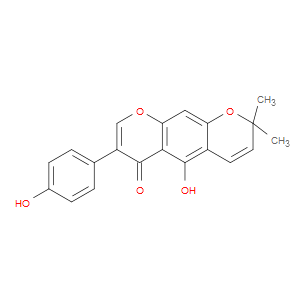
Ingredient ID: NPC97716
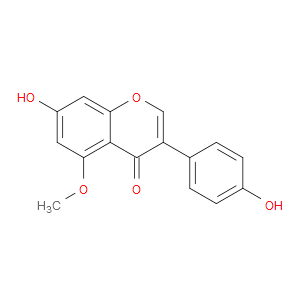
Ingredient ID: NPC7013
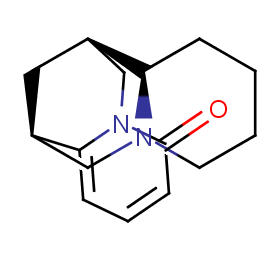
Ingredient ID: NPC61321

Ingredient ID: NPC56212
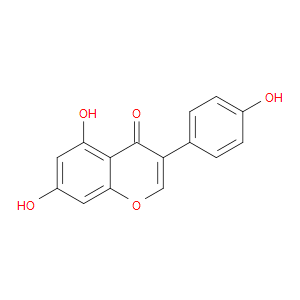
Ingredient ID: NPC39426

Ingredient ID: NPC32219
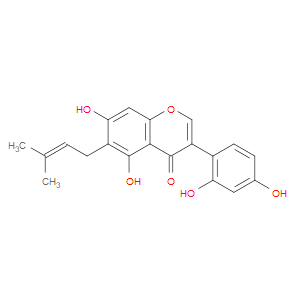
Ingredient ID: NPC268204

Ingredient ID: NPC259166

Ingredient ID: NPC202564

Ingredient ID: NPC1804

Ingredient ID: NPC162045
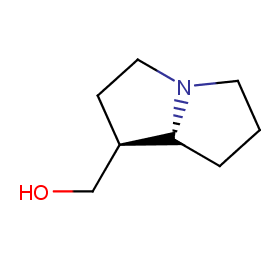
Ingredient ID: NPC161291

Ingredient ID: NPC150980
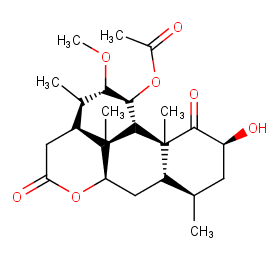
Ingredient ID: NPC13672

Ingredient ID: NPC13467

Ingredient ID: NPC124608
Classification of Human Proteins Collectively Targeted by the Plant
Detailed Information of Target Proteins
| Target Type | Protein Class | Gene ID | Protein Name | Uniprot ID | Target ChEMBL ID |
|---|---|---|---|---|---|
| Therapeutic Target | Enzyme | BLM | Bloom syndrome protein | P54132 | CHEMBL1293237 |
| Therapeutic Target | Nuclear hormone receptor subfamily 3 | ESRRB | Estrogen-related receptor beta | O95718 | CHEMBL3751 |
| Therapeutic Target | Nuclear hormone receptor subfamily 3 | ESR2 | Estrogen receptor beta | Q92731 | CHEMBL242 |
| Therapeutic Target | Nuclear hormone receptor subfamily 3 | ESR1 | Estrogen receptor alpha | P03372 | CHEMBL206 |
| Therapeutic Target | Nuclear hormone receptor subfamily 3 | ESRRA | Estrogen-related receptor alpha | P11474 | CHEMBL3429 |
| Therapeutic Target | Oxidoreductase | AOX1 | Aldehyde oxidase | Q06278 | CHEMBL3257 |
| Therapeutic Target | Peptide receptor (family A GPCR) | TSHR | Thyroid stimulating hormone receptor | P16473 | CHEMBL1963 |
| Therapeutic Target | Protein Kinase | ATM | Serine-protein kinase ATM | Q13315 | CHEMBL3797 |
| Therapeutic Target | Protein Kinase | ATR | Serine-protein kinase ATR | Q13535 | CHEMBL5024 |
| Therapeutic Target | Protein Kinase | MAP2K4 | Dual specificity mitogen-activated protein kinase kinase 4 | P45985 | CHEMBL2897 |
Clinical trials associated with plant from natural product (NP) & plant level:
| Clinical trials type | Number of clinical trials | |
|---|---|---|
| 36 | ||
| NCT ID | Title | Condition | Form in clinical use | Associated by plant or compound |
|---|---|---|---|---|
| NCT00001696 | A Pharmacokinetic Study of Genistein, a Tyrosine Kinase Inhibitor | cancer | Genistein (NPC39426) | |
| NCT00005827 | Genistein in Treating Patients With Stage II, Stage III, or Stage IV Prostate Cancer | prostate cancer | Genistein (NPC39426) | |
| NCT00010686 | Dietary Phytoestrogens and Bone Metabolism | osteoporosis | Genistein (NPC39426) | |
| NCT00016744 | Phenylbutyrate/Genistein Duotherapy in Delta F508-Homozygous(for Cystic Fibrosis) | cystic fibrosis | Genistein (NPC39426) | |
| NCT00058266 | Genistein in Treating Patients With Localized Prostate Cancer Who Are Planning to Undergo Radical Prostatectomy | prostate cancer | Genistein (NPC39426) | |
| NCT00118040 | Phase II Study of Isoflavone G-2535 (Genistein) in Patients With Bladder Cancer | urinary bladder carcinoma | Genistein (NPC39426) | |
| NCT00244933 | Gemcitabine Hydrochloride and Genistein in Treating Women With Stage IV Breast Cancer | breast cancer | Genistein (NPC39426) | |
| NCT00287690 | Isoflavones and the Coronary Circulation in Men and Women With Coronary Artery Disease | coronary artery disease | Genistein (NPC39426) | |
| NCT00290758 | Genistein in Preventing Breast Cancer in Women at High Risk for Breast Cancer | breast cancer | Genistein (NPC39426) | |
| NCT00376948 | Genistein, Gemcitabine, and Erlotinib in Treating Patients With Locally Advanced or Metastatic Pancreatic Cancer | pancreatic carcinoma | Genistein (NPC39426) |
❱❱❱ Associated Human Diseases and Detailed Association Evidence
How do we define the Plant-Targeted Human Disease Association?
Associated human diseases of an individual plant are summurized based on FOUR types of association evidence, these include:
❶ Association by Therapeutic Target: Bioactive protein targets of the plant were defined in "Molecular Targets" section, target-disease associations collected from TTD database were subsequently used to build the associations between the plant and its targeted human diseases.
❷ Association by Disease Gene Reversion: Plant and a specific disease will be associated when >= 1 plant target gene overlaped with disease's DEGs.
❸ Association by Clinical Trials of Plant: Plant and a specific disease will be associated when >= 1 clinical trial (the plant is the intervetion) can be matched in ClinicalTrials.gov database.
❹ Association by Clinical Trials of Plant Ingredients: Plant and a specific disease will be associated when >= 1 clinical trial (the plant ingredient is the intervetion) can be matched in ClinicalTrials.gov database.
Associated Disease of the Plant | Association Type & Detailed Evidence |
|---|---|
Acne vulgarisDisease Category: 14.Diseases of the skinDisease ICD-11 Code: ED80 |
ESR1
|
Acquired hypomelanotic disorderDisease Category: 14.Diseases of the skinDisease ICD-11 Code: ED63 |
MAOB
|
Acquired prion diseaseDisease Category: 08.Diseases of the nervous systemDisease ICD-11 Code: 8E01 |
ESR1
|
Acute diabete complicationDisease Category: 05.Endocrine, nutritional or metabolic diseasesDisease ICD-11 Code: 5A2Y |
DPP4
|
Acute myeloid leukaemiaDisease Category: 02.NeoplasmsDisease ICD-11 Code: 2A60 |
MAPT
|
Adenocarcinoma of bronchus or lungDisease Category: 02.NeoplasmsDisease ICD-11 Code: 2C25.0 |
CYP2C9,TSHR,BLM
|
Adenocarcinoma of pancreasDisease Category: 02.NeoplasmsDisease ICD-11 Code: 2C10.0 |
LMNA,BLM,CYP2C9,CHRNA3,MAOB,DPP4
|
Adenocarcinoma of prostateDisease Category: 02.NeoplasmsDisease ICD-11 Code: 2C82.0 |
NCT01325311,NCT00546039,NCT01126879
|
Adenocarcinoma of stomachDisease Category: 02.NeoplasmsDisease ICD-11 Code: 2B72.0 |
BLM
|
Adrenal cancerDisease Category: 02.NeoplasmsDisease ICD-11 Code: 2D11 |
ESR1
|

